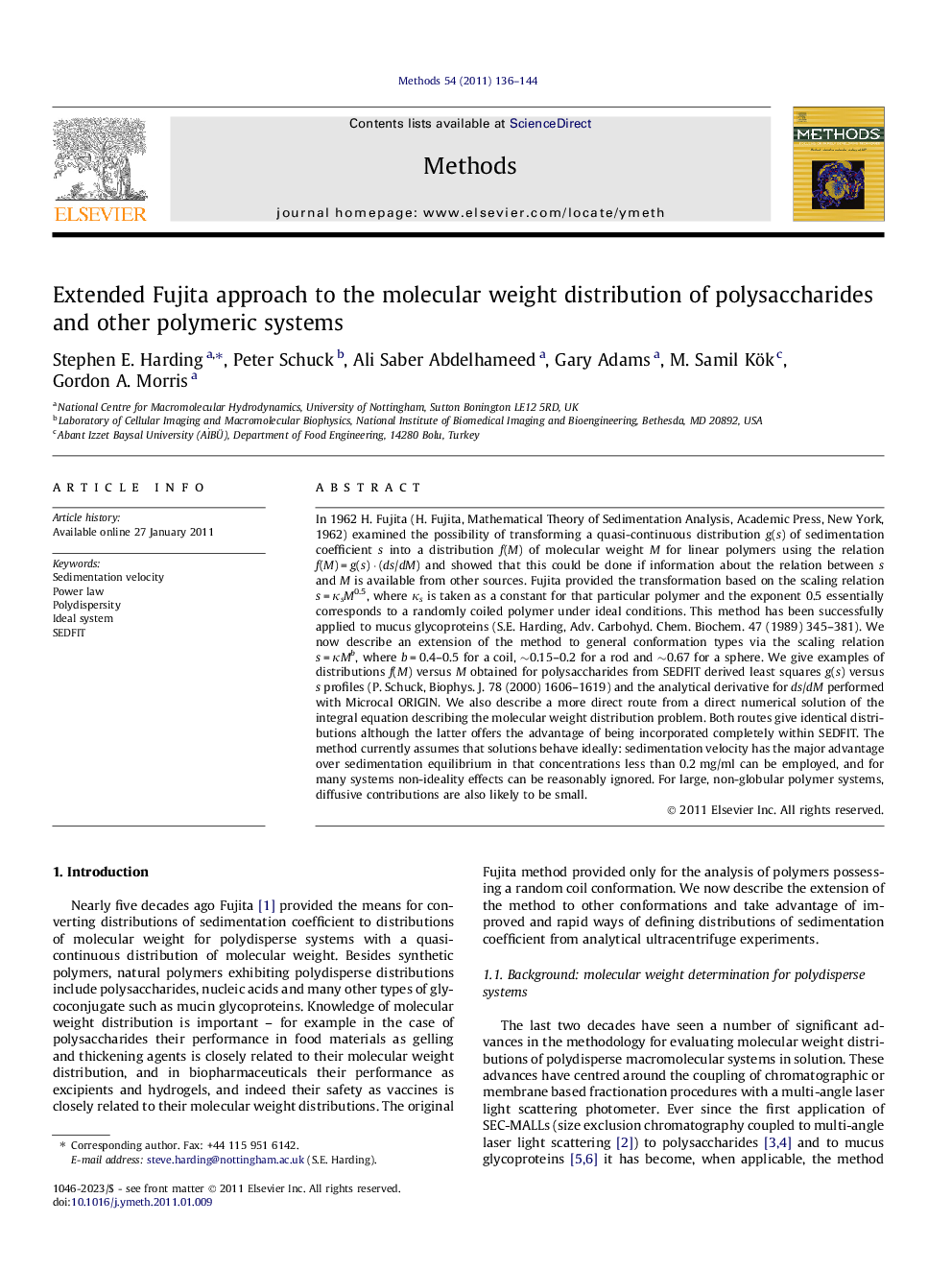| کد مقاله | کد نشریه | سال انتشار | مقاله انگلیسی | نسخه تمام متن |
|---|---|---|---|---|
| 1993589 | 1064684 | 2011 | 9 صفحه PDF | دانلود رایگان |

In 1962 H. Fujita (H. Fujita, Mathematical Theory of Sedimentation Analysis, Academic Press, New York, 1962) examined the possibility of transforming a quasi-continuous distribution g(s) of sedimentation coefficient s into a distribution f(M) of molecular weight M for linear polymers using the relation f(M) = g(s) · (ds/dM) and showed that this could be done if information about the relation between s and M is available from other sources. Fujita provided the transformation based on the scaling relation s = κsM0.5, where κs is taken as a constant for that particular polymer and the exponent 0.5 essentially corresponds to a randomly coiled polymer under ideal conditions. This method has been successfully applied to mucus glycoproteins (S.E. Harding, Adv. Carbohyd. Chem. Biochem. 47 (1989) 345–381). We now describe an extension of the method to general conformation types via the scaling relation s = κMb, where b = 0.4–0.5 for a coil, ∼0.15–0.2 for a rod and ∼0.67 for a sphere. We give examples of distributions f(M) versus M obtained for polysaccharides from SEDFIT derived least squares g(s) versus s profiles (P. Schuck, Biophys. J. 78 (2000) 1606–1619) and the analytical derivative for ds/dM performed with Microcal ORIGIN. We also describe a more direct route from a direct numerical solution of the integral equation describing the molecular weight distribution problem. Both routes give identical distributions although the latter offers the advantage of being incorporated completely within SEDFIT. The method currently assumes that solutions behave ideally: sedimentation velocity has the major advantage over sedimentation equilibrium in that concentrations less than 0.2 mg/ml can be employed, and for many systems non-ideality effects can be reasonably ignored. For large, non-globular polymer systems, diffusive contributions are also likely to be small.
Journal: Methods - Volume 54, Issue 1, May 2011, Pages 136–144